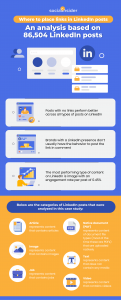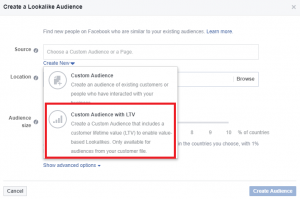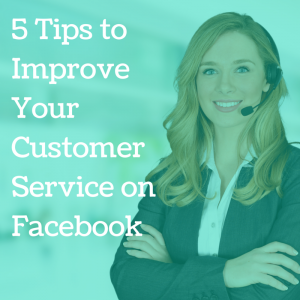“Good artists copy. Great artists steal.”

Although the precise origins of this controversial statement have been hotly disputed for years, it was the late Steve Jobs who famously attributed it to Pablo Picasso. Regardless of who actually said these words, they have given countless artists the “creative license” to be inspired by other artists and incorporate great ideas into their own work.
That’s what I’ll be doing in today’s post – giving you permission to be inspired. If your landing pages need a little “oomph,” then read on to see 17 beautiful examples of landing page inspiration from around the web. Hopefully, these examples will give you an idea or two of how you can make your landing pages better, increase your conversion rates, and provide a better experience for your users.
Before we get started, a couple of quick disclaimers. Firstly, unlike Picasso (or whoever really said that quote), I’m not advocating for blatantly stealing ideas from others. Plagiarism isn’t cool, and neither is openly ripping off someone else’s work. Be inspired, but don’t be a thief.
Secondly, not every single one of the following examples is a “true” landing page – some of them are homepages, but they can still serve as valuable examples of techniques you might want to incorporate into your own pages.
With those two caveats out of the way, let’s get started.
1. Use Aspirational Copy
Aspirational language is one of your most powerful weapons as a conversion copywriter. One of the best examples of aspirational copy on a landing page I’ve ever come across is this landing page by artist funding site Patreon:

Patreon connects working artists with fans of their work, who support their favorite artists financially through small donations and contributions. Think of it as an ongoing Kickstarter platform for artists. This means that, essentially, Patreon is asking its visitors to give money to artists.
The site could have taken numerous approaches to get visitors to part with their cash, but by using aspirational language, Patreon appeals to visitors’ desire to become a crucial part of the creative process.
People who support artists on Patreon aren’t giving someone money, and they’re not “donating” to a cause – they’re patrons of the arts, a term typically reserved for the kind of wealthy individuals after whom new wings in prestigious art galleries are named. This positioning is very clever, as it gives artists’ benefactors the opportunity to not only financially support artists they love, but also to think of themselves in a different way.
2. Put Trust Signals Front and Center
The inclusion of trust signals on your landing page can be enough to convince even the most hesitant prospect to take action. This is particularly true for companies operating in potentially sensitive areas such as financial applications. One company that understands this is billing automation provider Recurly, as demonstrated in our second example of landing page inspiration:

As you can see, Recurly uses its impressive trust signals to great effect on this landing page. Not only are the company logos positioned very prominently, but the logos themselves speak volumes about how secure and trusted Recurly is as a service – if LinkedIn, Adobe, Zillow, and Groupon are satisfied customers, chances are prospects will be, too.
Aside from the excellent use of trust signals on this landing page, the copy is also very clever: “Sophistication your CFO expects. Ease of use your team demands.” This clearly indicates that Recurly’s ideal customers are financial professionals who report to an executive team but have their own managerial responsibilities. This might seem straightforward, but appealing to people with such precision in so little copy is harder than it looks.
By positioning itself in this way, Recurly demonstrates that it keenly understands the needs of its prospects and appeals to them in terms of the benefits of using their system. Brilliant.
3. Leverage Your Unique Selling Proposition
Your unique selling proposition should be integral to your landing pages and your wider marketing initiatives, but that doesn’t mean you have to beat prospects over the head with it. In fact, taking a more subtle approach can be very compelling, as this example from college social network CampusTap demonstrates:

This minimal landing page might not appear to offer much in the way of valuable information, but it actually says a great deal.
Prospective users can infer a lot from the four words of supporting copy beneath the site’s name. It’s obvious that CampusTap’s unique selling proposition is privacy, a sore spot for many social media users who are concerned about what they post on Facebook or Twitter. This alone could prove tempting to college kids hoping to keep prying eyes out of their digital lives.
The copy also suggests an air of exclusivity. Sure, college might not be quite as cliquey as high school, but there’s still a very delicate social ecosystem present at many colleges – something that some users might find appealing. The word “private” suggests not only security of users’ data, but also a curated sense of community that’s within the user’s control.
4. Add Interactive Elements
Today’s web users are increasingly savvy, and expect not only the information they want, but an immersive, rewarding web experience. One way to exceed your visitors’ expectations (or at least meet them) is to include interactive elements on your landing pages.
This technique can be very powerful. The example below (and its accompanying ad), from custom clothing retailer Tailor4Less, adds interactivity to the page to create an engaging way for prospects to design their own suits:


Even the promise of an interactive experience makes the call-to-action more compelling. This approach requires a little more technical overhead than a static landing page, but I’d wager the engagement and conversion rates are higher.
5. Let Images Do The Talking
Businesses offering somewhat abstract products or services might be tempted to use reams of text to explain what they do. However, in most cases, simple copy combined with a strong “hero” visual can actually explain what you do far more effectively than a wall of text. Case in point, this landing page from ad optimization firm Chatterbox Labs:

Even to experienced marketers, the concept of audience segmentation can be tricky to convey visually. However, this landing page makes excellent use of a hero visual to accompany its brief copy to get the point across in an easily digestible, visually appealing way.
Rather than use words to explain how complicated audience segmentation can be, or how diverse audiences themselves can be, Chatterbox Labs uses a familiar scene in its hero visual – a busy New York City street scene. This implies the complexity of audiences without resorting to lengthy copy that would clutter an otherwise minimal page.
Granted, the call-to-action could be a little clearer, but you get the idea – let your images do the talking.
6. Make It Effortless for Visitors to Convert
Before we dive into our next example of landing page inspiration, take a quick look at the previous five. Notice anything? You got it – they all have single call-to-action buttons.
Making it as easy as possible for your visitors to convert will increase your conversion rates considerably. The more work you ask prospects to do, the less likely they are to do it. One service that leverages this principle very well is to-do list app Todoist:

If you’re looking to grow the user base of your app, for example, social integration is an excellent way to make the conversion process effortless, as this example from online payments service Venmo does:

It’s important to mention that what actually constitutes a conversion varies widely. For some businesses, a conversion might be as simple as a visitor clicking through to a page with more information. Others might define a conversion as the submission of a lengthy web form, complete with name, age, salary range, job title etc. Regardless of what you want your visitors to do, make it as easy as possible.
7. Get to the Point – Fast
Many marketers assume that just because someone clicked an ad or a link in a social media update that they don’t have to explain what their business is about on their landing page.
This is a mistake.
Your landing pages should be unique to the sources that directed users to them in the first place, but you also need to make sure your visitors can figure out what you do, what you sell, or what you’re offering almost instantly. The longer it takes for them to figure it out, the greater the risk you’ll lose them. This is why you need to get to the point almost instantaneously, like this landing page from AskNative.com does:

Although this is actually AskNative.com’s homepage, it doesn’t matter – there’s no ambiguity whatsoever about what you can expect from AskNative as a service. The copy is clear, brief, and explains exactly what AskNative offers, before prompting the user to sign up via a social integration with Facebook (a smart move – see #6).
The faster you get to the point, the more likely your visitors are to click through and convert. Don’t make them waste time trying to figure out what you do by including “clever” copy or outlandish design choices.
8. Help Visitors Visualize a Better Life
I’ve said it before, and I’ll say it again. People don’t want to buy things – they want to solve their problems and make their lives better. Helping prospective customers visualize this better life can be a powerfully persuasive technique, as this example from small business software company Wave proves:

Wave is essentially a bookkeeping, taxation, and invoicing tool. Although all these things are crucial to the success of any small business, they’re not exactly sexy and they’re definitely not why people launch their own businesses in the first place. That’s why Wave focuses on the outcome – and the emotional payoff of using Wave – rather than the specifics of its software.
The combination testimonial/hero image is a shrewd move. It not only shows a real, satisfied customer (which serves as a trust signal), it also helps visitors imagine their life as a Wave customer. To most entrepreneurs, the idea of “doing what they love” while a single software package “does the rest” is very alluring, and this is exactly what Wave wants prospects to feel.
9. Include Video
Many businesses are put off by video out of an assumption that videos have to cost thousands of dollars and feature slick, top-notch production values. We’ve talked about video landing pages before, and it’s worth repeating that the inclusion of video can take a landing page to the next level.
Check out this example landing page from chicken coop manufacturer ChickenSaloon.com (and the ad that directs users to the page). It features a short video from reality TV show “DIY Yardcore,” which highlights one of its products, the Tavern coop:


Video doesn’t have to cost an arm and a leg, and its inclusion on a landing page can make it a much “stickier” experience for the user. In this example, the video also lends the brand and its product additional authenticity, and helps establish trust in the viewer.
If you’re not sure how to get started with video for your landing pages, check out this post on producing marketing videos of your own.
10. Help People Make Better Choices
Choosing the right bottle of red to accompany a delicately braised shank of lamb or a rare porterhouse can be a minefield for the uninitiated. That’s why Vivino, an app that helps people choose the perfect wine, positions itself as an essential tool for aspiring foodies and wine enthusiasts.

Vivino takes the guesswork out of purchasing the right wine, and helps users pick the perfect vintage of wine for virtually every occasion. This helps people make better decisions, which once again appeals to their desire to solve their problems – even ones as seemingly trivial as choosing the right wine.
Another benefit of this approach is providing people with the means to appear more sophisticated or knowledgeable. One of the primary motivations people share certain content on social media is to appear intelligent and well-informed to their peers. If people share content to appear smarter, it makes sense to leverage this desire to seem worldly with your landing pages, too.
11. Make a Bold Statement
Sometimes, what you’re trying to do is so important, so powerful, that you don’t need to do much else besides get people to stand up and take action. Case in point, this page from Last Days of Ivory:

Design-wise, it doesn’t get much bolder than this. The contrast of the white-on-black is a powerful visual statement, and there’s very little going on aside from the logo (which also serves as an unorthodox call-to-action), some branding icons to show which organizations the campaign is affiliated with, and the “real” CTA in the top-right corner.
In examples like this, simplicity and the power of the message do all the heavy lifting, and to great effect.
12. Know Your Brand and Take ‘Risks’
Let’s face it – most marketing material is deathly boring. One reason for this is because too few brands are willing to take creative risks with their campaigns. One brand that doesn’t shy away from risk is Tapely, an online mixtape sharing site:

Digital music services like Spotify are great, but a curated playlist will never have the same raw feel as a mixtape. That’s why Tapely channels the emotion, energy, and attitude of the bands that changed our lives and the bootlegged tracks we shared with our friends to create a landing page that doesn’t take any shit from anybody.
Only you can decide how far you can go with your marketing campaigns, and obviously this approach won’t work for everyone. However, for certain lifestyle brands, doing something that most people might think of as a little risky can strengthen your brand and offer a sense of authenticity that’s sadly lacking from most marketing material.
13. Ask Questions
One of the best ways to tempt your prospects to convert is by engaging them with a question. This can be a remarkably effective technique to get visitors to click through to another page, as this example from real estate website Trulia demonstrates:

Sure, homeowners know how much their house was worth when they signed their mortgage, but has the value appreciated or depreciated? By leveraging users’ curiosity, Trulia makes it tempting to provide their personal information and convert – very clever.
14. Appeal to Prospects’ Emotions
Regardless of what prospects are looking to buy, they want to feel something – better about themselves, more secure in a decision, adequately informed about an issue.
One of the biggest reasons why most B2B content and marketing is so bland is because many companies purposefully avoid trying to solicit an emotional response from their prospects – a mistake that results in dry, forgettable messaging.
Done well, appealing to prospects’ emotions can be highly effective. This landing page from Happify, an app that tracks emotional behavior over time to promote a happier outlook, leverages this technique very well:

In addition to the visuals, which suggest the kind of freedom and time to relax and indulge that many of us lack these days, the copy is powerfully persuasive. It creates a sense of urgency without being overly forceful, and hints at the benefits of using the app without resorting to the hard sell.
The combination of the imagery and copy results in an emotionally appealing page that spurs the curiosity of the prospect and leverages their desire for an emotional payoff. Speaking of emotional payoffs…
15. Speak Directly to Your Visitors
Another mistake that far too many B2B companies (in particular) are guilty of is using distant, third-person language in their copy. This might be suitable in certain situations, but for the most part, all it will do is alienate your visitors.
A lot of marketers talk about the value of genuine connections, simply because they’re so rare. Similarly to the example above, you want your visitors to feel something when they visit your site or arrive on your landing page, and one way to do this is by directly speaking to your prospect. Check out this example from the now-defunct video chat app Awesometalk:

Although Awesometalk folded a while back, this landing page remains a great example of how directly addressing your visitors and appealing to their emotions can make even a relatively common online service significantly more attractive.
The copy directly appeals to the visitor and makes it easy to convert, two crucial factors for a business operating in a (very) crowded space. If nothing else, this example shows how simple copy can have a big impact.
16. Poke Fun at Common Problems
One of the most effective ways to stimulate interest in a solution is by drawing attention to and acknowledging the problem. Many companies do this indirectly, but sometimes, a more straightforward approach can be more compelling, as this example from Meeting Hero demonstrates:

Productivity app Meeting Hero (which is now WorkLife) not only acknowledges the problem it tries to solve, but does so in a slightly humorous way. By adding a little character to the copy and gently poking fun at the fact that most meetings are terrible, this page makes the implied payoff of using the app more appealing.
Unfortunately, Meeting Hero lost this messaging when it became WorkLife, which favors the typically bland positioning you’ve seen countless times before. However, this example still shows that a little humor and directly acknowledging a problem everyone is aware of can be a great way to get visitors interested in what you have to offer.
17. Think About Color
So far, we’ve spent most of this post looking at messaging, copy, and tone, but we haven’t examined one of the most important elements of a landing page – the color palette.
Although color may not be as immediately obvious in its message as copy, it says a great deal about your product, your company, and your brand. Let’s take a look at this example from password management service Mitro:

This page isn’t just aesthetically pleasing with a sharp, modern design, it also makes excellent use of color. The blue signifies trust, strength, and dependability – all things you want in a password manager. The subtle blend of green also implies peace, suggesting that Mitro users can rest easy in the knowledge that their passwords are safe in Mitro’s hands.
When you’re designing your next landing page, think about what you want the color palette to say about your business. Do you want to emphasize strength and trust, or convey a sense of boldness and excitement? Check this color chart to see what colors signify and think carefully about what you want color to say about your product.

How Do Your Landing Pages Measure Up?
So, now that we’ve looked at some beautiful landing page inspiration from around the web, it’s time to evaluate how your landing pages are doing.
(249)
Report Post



